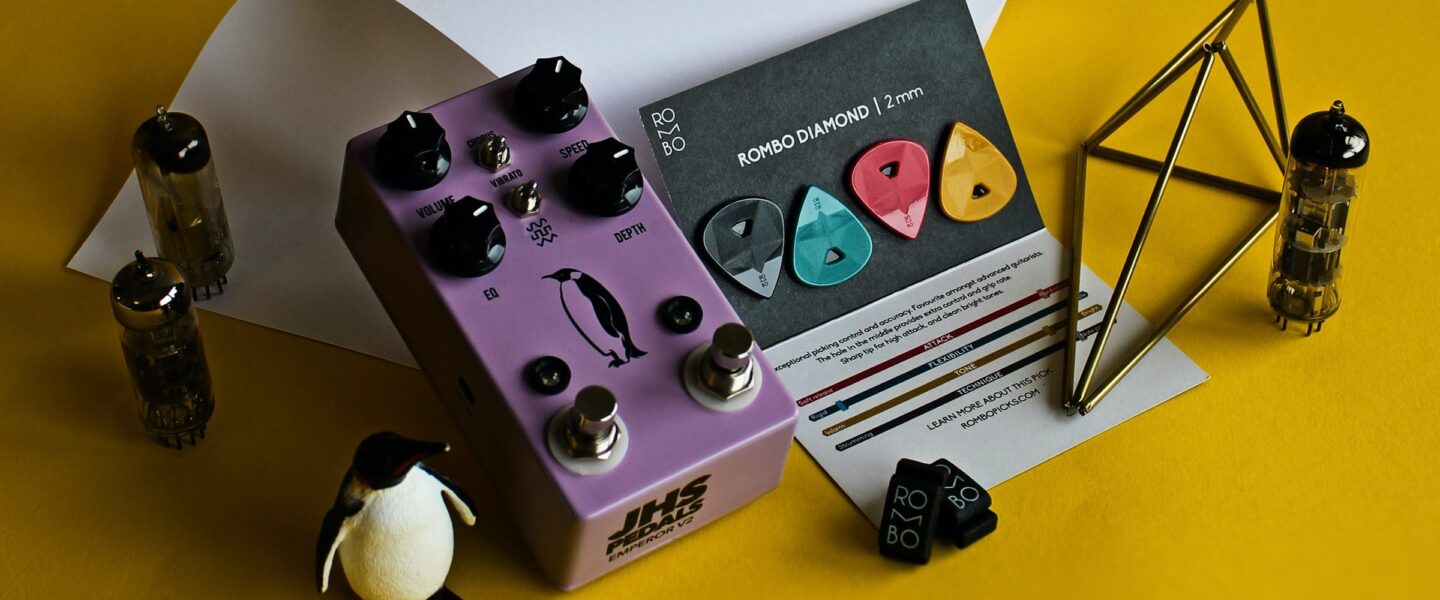Guitar pedals are a vital component in shaping a guitarist’s sound. Whether you are playing in a band or recording music in a studio, your pedal order will make a significant impact on your tone. Setting up your pedals in the right order is crucial for getting the best sound possible. In this article, we will discuss the best order to set guitar pedals.
Before we dive into the best order, it is essential to understand the different types of guitar pedals. There are various types of pedals available, each with its unique purpose. Let’s take a look at some of the most common types of guitar pedals:
- Overdrive pedals: These pedals are used to add some grit to your guitar sound, replicating the sound of an overdriven tube amplifier.
- Distortion pedals: Distortion pedals are designed to produce more intense distortion sounds than overdrive pedals.
- Fuzz pedals: Fuzz pedals are like distortion pedals, but they produce a more aggressive, fuzzy sound.
- Modulation pedals: These pedals are used to add different effects to your sound, such as chorus, flanger, and phaser.
- Delay pedals: Delay pedals are used to create an echo effect by delaying the sound of your guitar.
- Reverb pedals: Reverb pedals are used to replicate the sound of a room or hall, adding a sense of space to your guitar sound.
Now that we have a basic understanding of the different types of guitar pedals let’s talk about the best order to set them up.
Tuner: A tuner pedal should always be the first pedal in your chain. Tuning your guitar is essential, and having a tuner pedal at the front of your signal chain ensures that your guitar is always in tune.
Filters and Dynamics: After the tuner, the next pedals to consider are filters and dynamics pedals such as wah pedals, compressor pedals, and EQ pedals. These pedals shape the tone of your guitar before the signal hits the drive pedals.
Overdrive and Distortion: Overdrive pedals should be placed before distortion pedals in your signal chain. This order allows the overdrive pedal to push the distortion pedal harder, resulting in a more harmonically-rich tone. If you’re only using one of these pedals, it’s best to place it first in your chain.
Fuzz: Fuzz pedals should be placed after overdrive and distortion pedals in your signal chain. Fuzz pedals work best with a clean guitar signal, and putting them after overdrive or distortion pedals can result in a muddy sound.
Modulation: Modulation pedals, such as chorus, flanger, and phaser, should be placed after overdrive, distortion, and fuzz pedals. These pedals work best when placed after the drive pedals as they interact with the harmonics created by the drive pedals.
Delay and Reverb: Delay pedals should be placed at the end of your signal chain, just before the reverb pedal. Delay pedals replicate the sound of an echo, and placing them before reverb pedals creates a more natural-sounding effect.
Volume: A volume pedal should be placed at the end of your signal chain. A volume pedal allows you to control the volume of your guitar without affecting your tone.
Now that we have gone over the best order to set guitar pedals, it’s essential to remember that there are no hard and fast rules when it comes to pedal order. Experimenting with different pedal orders can lead to exciting and unique sounds. It’s always best to experiment and find what works best for you and your playing style.
Setting up your guitar pedals in the right order is essential for getting the best sound possible. The order we have outlined above is a great starting point, but don’t be afraid to experiment and find what works best for you. Every guitarist has a unique playing style and musical preferences, and what works for one guitarist may not work for another.
One factor to consider when setting up your pedal order is the impedance of your pedals. Impedance is the resistance a pedal has to a guitar signal. High impedance pedals, such as distortion and overdrive pedals, work best when placed first in the signal chain. Low impedance pedals, such as modulation and delay pedals, work best when placed later in the signal chain.
Another factor to consider is the power supply for your pedals. Many pedals require a specific voltage and polarity to function correctly. It’s important to check the power requirements for each pedal and ensure that your power supply can provide the necessary voltage and polarity.
It’s also essential to consider the number of pedals in your signal chain. The more pedals you have, the more potential there is for signal degradation and noise. Using high-quality cables and a buffer pedal can help minimize signal loss and noise.
Lastly, it’s important to listen to your tone and make adjustments as needed. The pedal order is just one factor in shaping your guitar sound. Other factors such as amp settings, pickup selection, and playing technique can also affect your tone. Experiment with different combinations of pedals and settings to find the sound that best suits your playing style and musical preferences.
In conclusion, setting up your guitar pedals in the right order is crucial for getting the best sound possible. While there is no one “correct” order, the order outlined above is a great starting point. Consider factors such as impedance, power supply, and the number of pedals in your signal chain, and always listen to your tone and make adjustments as needed. With a bit of experimentation and fine-tuning, you can create a unique and inspiring guitar sound that reflects your musical style and creativity.

